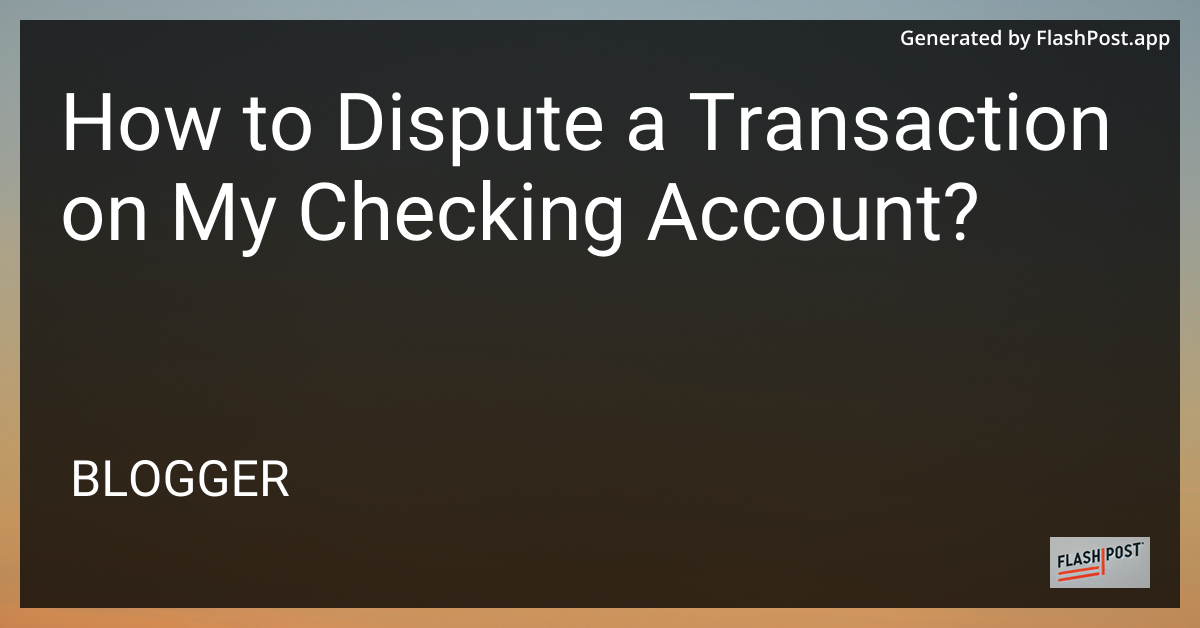How to Dispute a Transaction on My Checking Account?

How to Dispute a Transaction on Your Checking Account
In today’s fast-paced digital world, managing finances and monitoring your checking account transactions are crucial. Sometimes, unauthorized or incorrect charges may appear, prompting the need to dispute a transaction. This guide provides a step-by-step process to help you effectively handle such situations.
Understanding the Dispute Process
A transaction dispute occurs when there is an error, unauthorized transaction, or a charge that you believe does not accurately reflect your expenditure. Resolving these issues promptly is essential to ensure the security of your funds and to maintain an accurate account balance.
Steps to Dispute a Transaction
1. Review Account Statements
Start by thoroughly reviewing your bank statements. Check every transaction against your receipts and records to ensure accuracy. This careful review can help you identify unauthorized charges or errors.
2. Contact Your Bank
If you identify a suspicious transaction, contact your bank immediately. Most banks have dedicated customer service lines for handling disputes efficiently. Provide them with details such as the transaction amount, date, and description.
3. Gather Documentation
Before contacting your bank, gather any relevant documentation that supports your claim. This may include receipts, invoices, or any communication regarding the transaction. Having this information handy can expedite the dispute resolution process.
4. File a Dispute
Follow the bank’s procedures for formally disputing the transaction. This usually involves filling out a dispute form, either online or in-person. Be clear and concise about the reason for your dispute, and provide all supporting documentation.
5. Monitor the Resolution
After submitting your dispute, keep track of the progress. Banks generally have a set timeframe to resolve disputes, typically ranging from a few days to several weeks. Be proactive in following up to ensure the issue is addressed promptly.
6. Follow Up
Once the dispute is resolved, verify that the outcome meets your expectations and that any necessary adjustments are made to your account. Keep a record of the resolution for future reference.
Useful Links
Conclusion
Disputing a transaction on your checking account can be a straightforward process if handled correctly. By staying vigilant, maintaining clear records, and understanding your bank’s dispute procedures, you can ensure your financial security and peace of mind. Regularly reviewing your account statements and staying informed about banking practices will contribute to efficiently managing your finances. “`
This format should help readers who are looking to dispute a transaction on their checking account while optimizing for search engines with relevant keywords and links.
Comments
Post a Comment